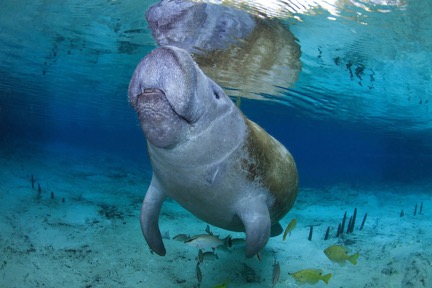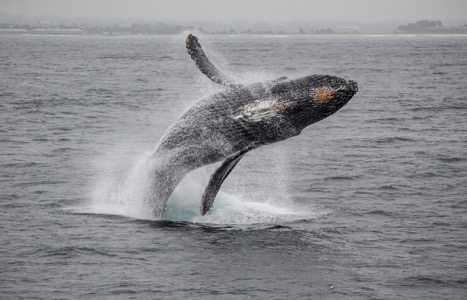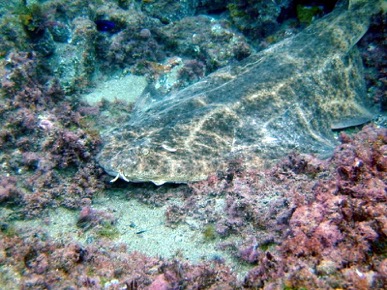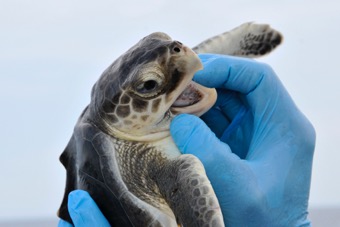This World Wildlife Conservation Day, We’re Celebrating the Endangered Species Act
What does conservation mean to you?

What does conservation mean to you?
Maybe a childhood memory of fishing with family comes to mind. Maybe you think of a bald eagle or a grey wolf, iconic American animals that people across the country have fought to protect. Or maybe you think of picking up trash at a beach, in your neighborhood or even your own backyard.
Personally, the first thing that comes to my mind is the manatee, my all-time favorite animal. I think about trips to Florida, seeing their whiskered snouts poke out of the water as I kayaked by. I think about the speed boats and red tides that threaten them. And I think about how the Florida manatee population, once endangered, has made a comeback in recent years thanks to the Endangered Species Act.
December 4th is World Wildlife Conservation Day, and all of us here at Ocean Conservancy are thinking about how we can work to conserve our oceans and protect the creatures that call it home. One of the most important ways we can all do this today—and every day—is by supporting the Endangered Species Act. For 45 years, this law has been a critical champion for saving and protecting some of our favorite ocean animals. From the Arctic Ocean to the Gulf of Mexico, we can see the ESA’s impact: ninety-nine percent of the more than 2,000 species listed as part of the law have survived, and many have been set on a path to recovery.
In anticipation of World Wildlife Conservation Day, I wanted to highlight just a few of the hundreds of ocean species that the ESA helps to protect:

- Humpback Whale—Megaptera novaeangliae
One of the most iconic creatures in all of the sea, the humpback whale can be found in every ocean in the world. However, years of whaling caused their numbers to dwindle by the mid-20th century. After years of global conservation efforts, Humpback Whales stocks have begun to recover.

- Angelshark—Squatina squatina
Sometimes mistaken for a ray, these bottom-dwellers are one of the most threatened types of shark. All 23 species of Angelshark have been hit particularly hard by commercial fishing and trawling, which often inadvertently traps and kills them. Thankfully, several of the species are protected under the ESA, which gives them additional protections.

- Kemps Ridley Sea Turtle—Lepidochelys kempii
Of the seven different species of sea turtles in the world, the Kemps Ridley Sea Turtle is the most endangered, with an estimated worldwide female nesting population of just 1,000. Between getting caught in fishermen’s nets, over-harvesting of their eggs, and oil spills, these turtles face a variety of threats. The ESA created marine turtle habitats and tough laws designed to prevent people from harming the Kemps Ridley.

- Chambered Nautilus—Nautilus pompilius
These photogenic mollusks are known for their nearly perfect golden spirals. Unfortunately, their beauty is one of the things that put them at risk from humans: nearly 1.7 million Nautilus shells have been imported into the U.S. in the past 16 years, where they can be sold for as much as $200 dollars. They were listed as threatened under the ESA this year, and will hopefully receive additional protections in the future.

- Sturgeon—Acipenseridae
Sturgeons are sometimes called living dinosaurs: they’re one of the oldest families of bony fish in existence of the sea range and can range from seven to twelve feet in length. All sturgeon species are critically threatened, due in large part to high demand for their roe, which is processed into caviar. To ensure the sturgeon’s continued survival, their habitats have been protected under the ESA, and the production of caviar is regulated.

- Hawaiian Monk Seal—Neomonachus schauinslandi
The Hawaiian Monk Seal is one of the most endangered marine mammals in the world. Indigenous to the northwestern Hawaiian island, there are only about 1,400 remaining. Luckily, through recovery efforts and protections under the ESA that keep humans from disturbing their habitat, their population is seeing a slow but steady increase.
Recently, the ESA itself has been threatened. Just this September, the Trump Administration attempted to weaken protections for threaten species. No matter what you think of when you think about wildlife conservation, the chances are that the ESA has impacted it in some way. Join us at Ocean Conservancy and take action to protect the Endangered Species Act.